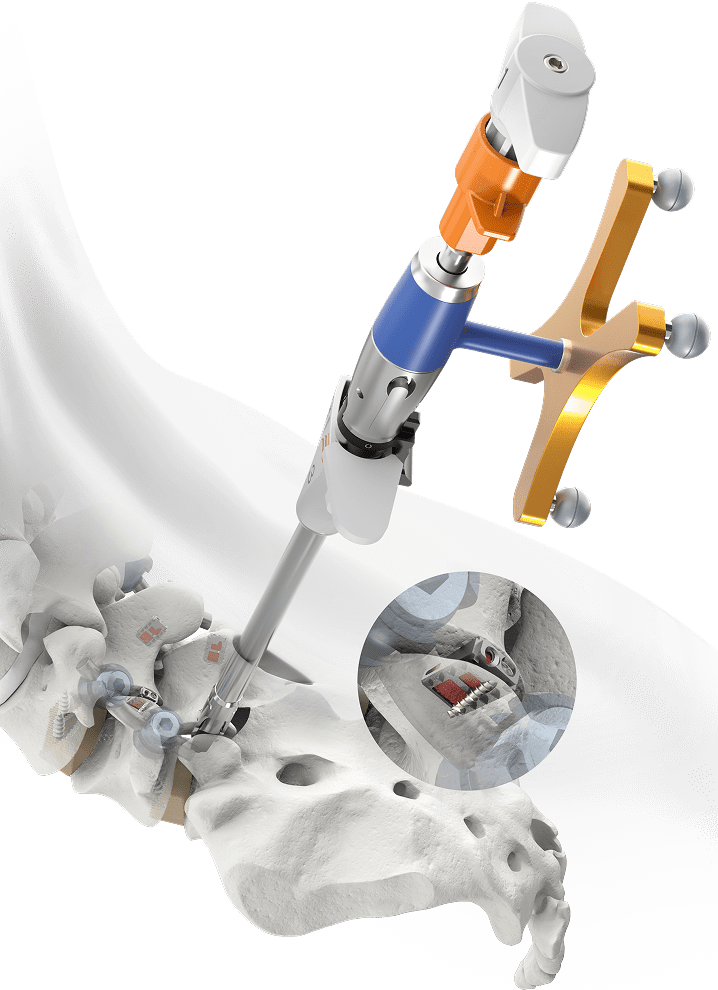Traditionally, lumbar spine surgery has centered on interbody fusion and pedicle screw fixation. However, CORUS-LX introduces a paradigm shift—redirecting focus to the facet joints, an often underutilized yet critical structure for achieving fusion and stabilization.

Our Mission is to establish Circumferential Cervical Fusion (CCF) as the standard of care for high-risk patients.

CORUS-LX Implant is an integrated construct comprised of a CAVUX Cage-LX and an ALLY Bone Screw-LX. CORUS-LX Implant is placed bilaterally through a posterior surgical approach and spans the facet interspace with points of fixation at each end of the construct.
CORUS-LX Implant is intended to provide temporary stabilization as an adjunct to a 1 or 2 level interbody lumbar fusion with autogenous and/or allogenic bone graft and must be accompanied with an FDA cleared intervertebral body fusion device implanted at the same spinal level(s), and may be used with a pedicle screw and rod system implanted at the same spinal level(s).
CORUS-LX Implant is indicated for the treatment of patients with lumbar degenerative disc disease (DDD) from L4 to S1 in skeletally mature patients who have failed conservative care.
